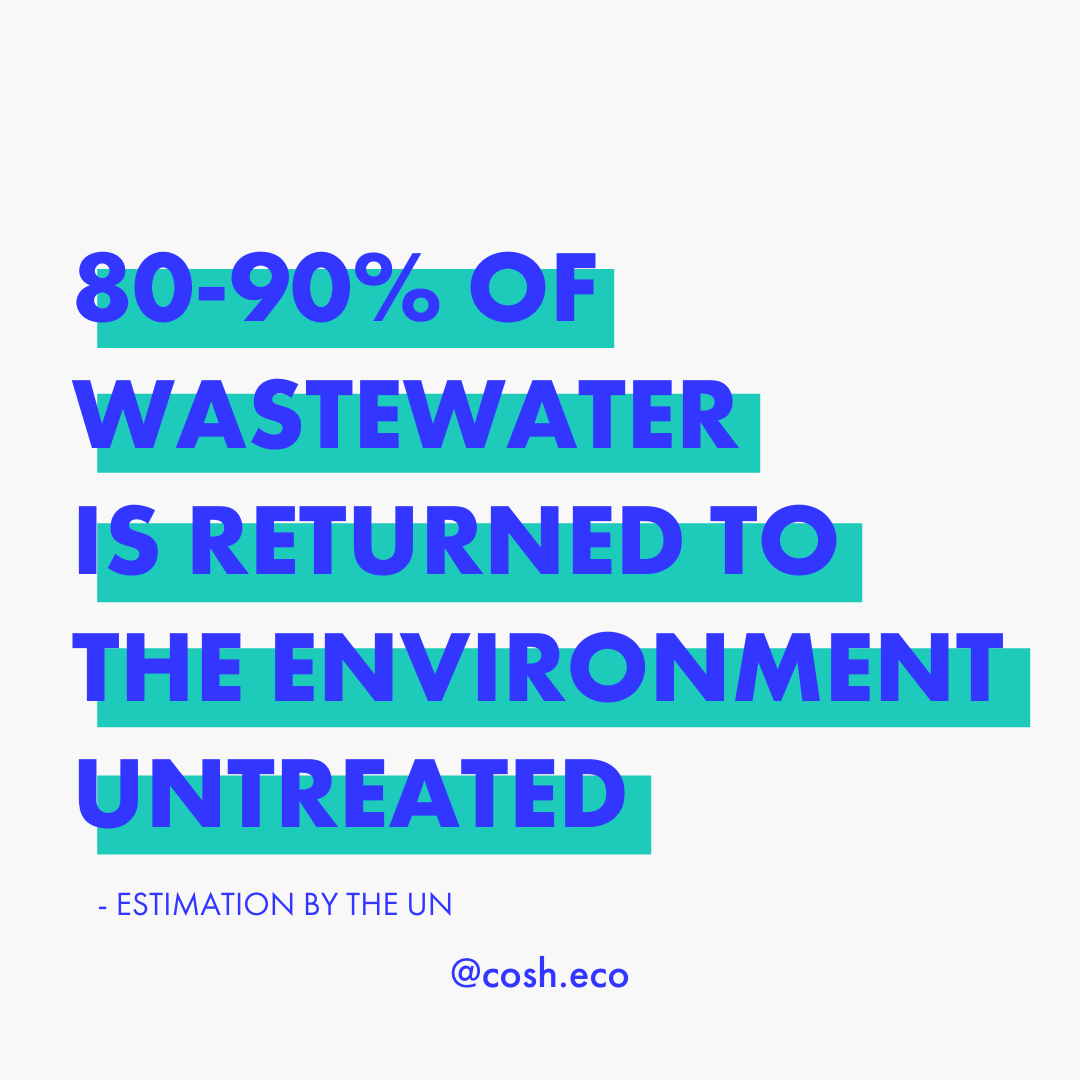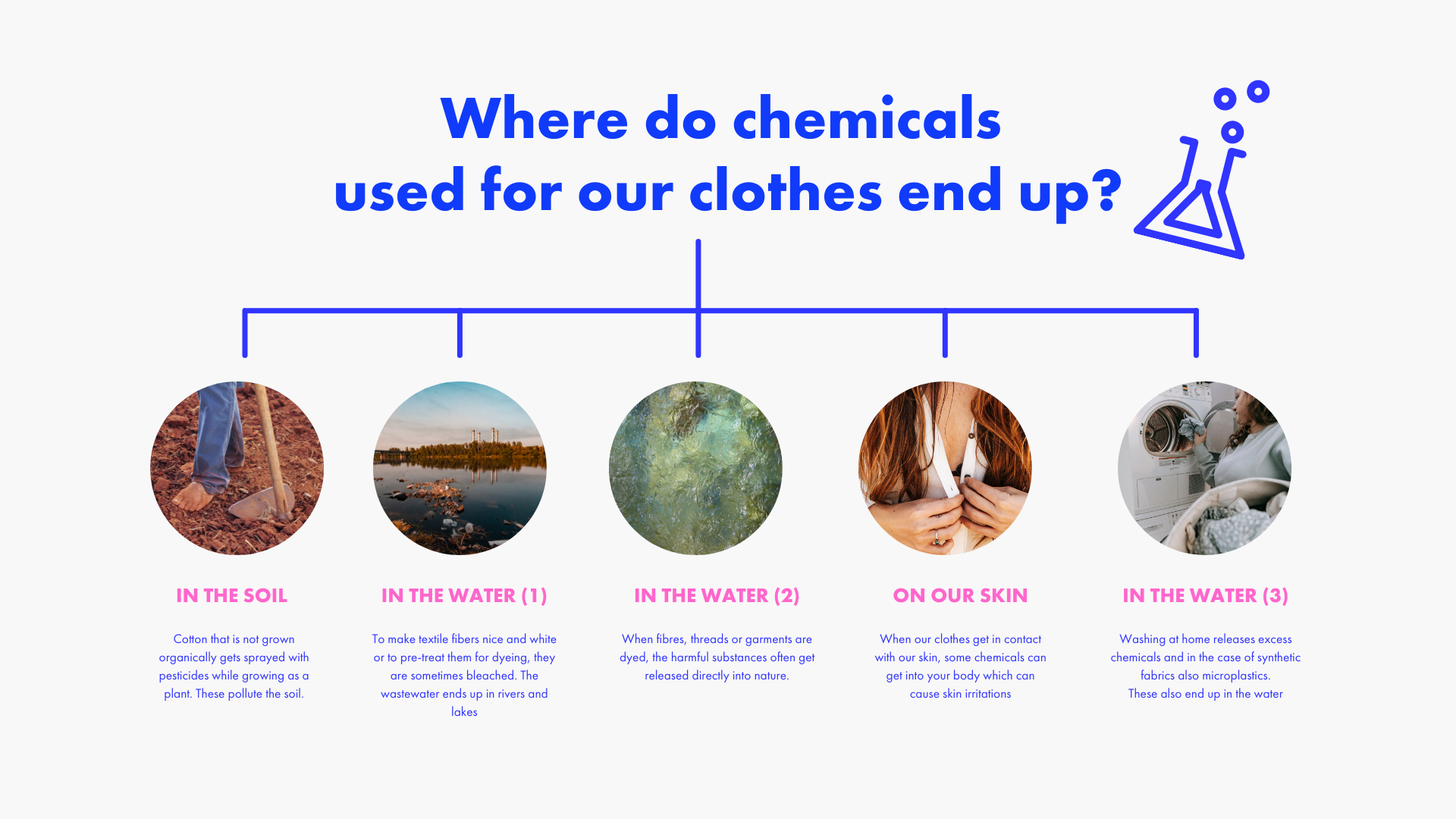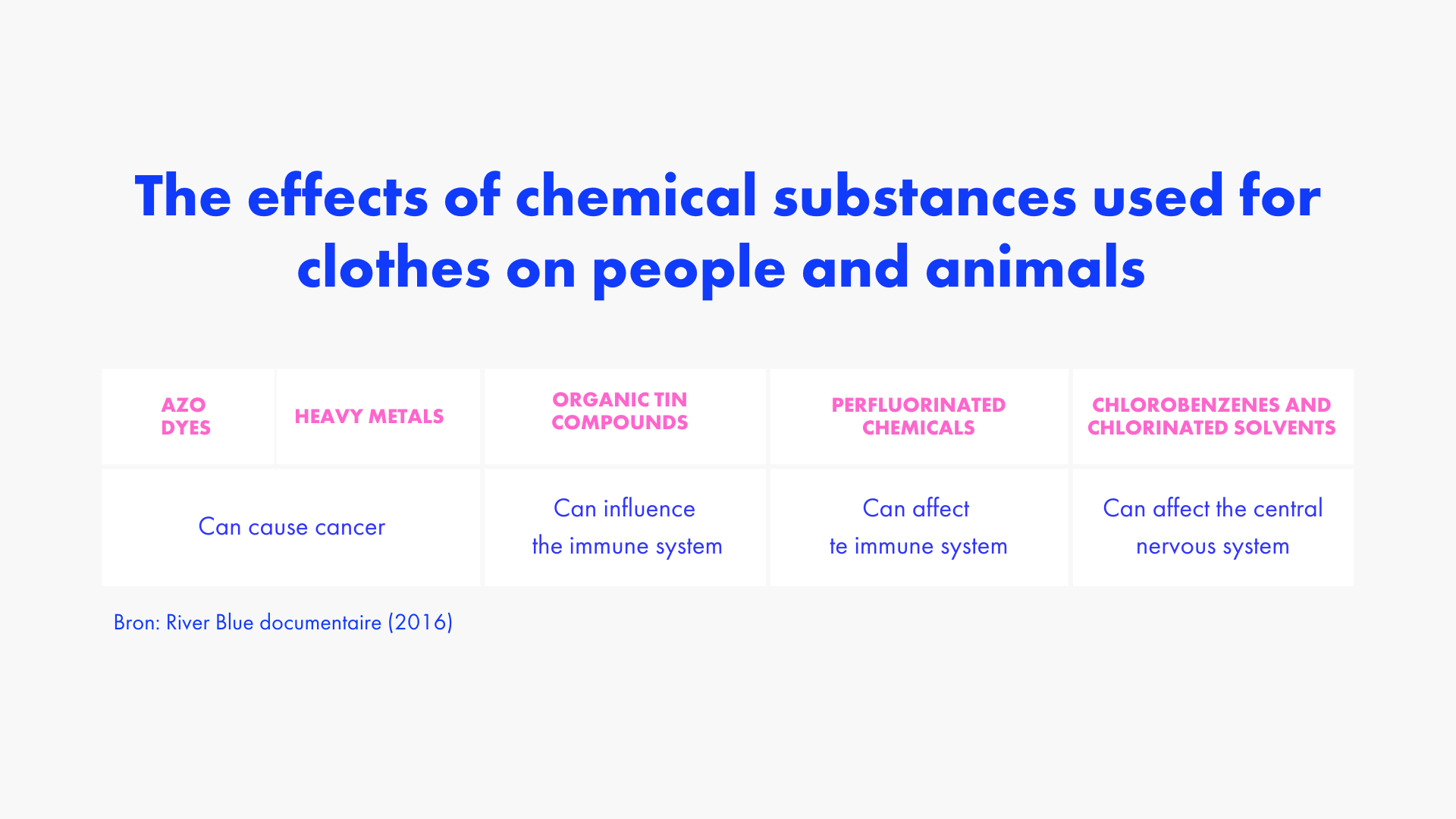
6 November 2025
Sunlight and colour: the hidden drivers of microfiber pollution in the ocean
- Plastics
Would you buy a red dress if you knew it made a river in Asia turn into the same colour? And would you wear jeans containing carcinogenic substances? The harsh reality is that everyone, including you and me, is guaranteed to have such a garment in their closet.
You might look at the attached tag to see if that beautiful jumper in the shop is made from sustainable material, though the information that is often missing is how it got its beautiful colour… In this article, you will read more about the world behind your colourful clothes.

According to the World Health Organisation (WHO), textile dyeing causes around 20% of industrial water pollution. Various types of harmful dyes, bleaches and finishing agents also end up in the water. Regulations and surveillance of wastewater dumping are weak, especially in many countries where clothing is made, such as Bangladesh. These harmful substances often flow directly into local rivers or other water streams. Factories that have filters installed do not always use them due to the expensive operating costs. These added costs mean less profit margin for the factories (who already are paid little by today’s fashion giants).
Aquatic life and other animals who live in the surrounding areas also suffer consequences from the wastewater. In an article published by Forbes, the World Bank calls the garment and textile industry a major contributor to water pollution: “in 2015, the sector used 79 billion cubic metres of water and the UN suggests that globally, 80 – 90% of wastewater is released into the environment untreated.”

The textile industry did not always rely on so many toxic substances. Take your must-have blue jeans, initially produced in the United States. The dyes used were from indigo plants grown in the United States. Chemical-based dyes soon replaced natural dyes as they imitated the same colour, and a consistent result and were cheaper. By 1914, the natural indigo industry had practically disappeared. Production then moved to Asia as these chemicals became prohibited in the US and Europe and the increasing popularity meant faster production and larger quantities were required.
Not only Asian countries such as China and Indonesia are struggling with extremely polluted rivers as a result of clothing for the Western world, Africa is now facing the same problem.
According to Reuters, a report by Water Witness International (WWI) highlighted rivers in Lesotho, in southern Africa, and Tanzania have been found polluted due to the increase of global brands sourcing clothing from garment factories in Africa.
The big retail chains are moving to the south of Africa because of the even cheaper African labour and tax advantages.
In Lesotho, researchers discovered a river that was visibly polluted with blue dye from dyeing denim jeans. The report also stated that some stretches of the Msimbazi River near a textile mill near Dar es Salaam, Tanzania, have a pH value of 12. That means the water is very basic/alkaline. According to the standards for the basic quality of large rivers the pH value can vary between 6.5 and 8.5. Local communities use the river for washing and irrigation, among other things.
For the people who live close by the rivers and surrounding areas, the consequences are serious. The drinking water of the local communities is polluted, yet they have no alternative option but to drink it anyway. Those who work in the factories are exposed to harmful substances, either by handling the clothing in the dye baths or by breathing the chemicals in the air. This ultimately impacts their health.
We can no longer deny that there is a link between dyes from the fashion industry and water pollution. The Greenpeace Foundation launched a ‘Detox’ campaign in 2011 to draw attention to this problem. They called on the textile industry to be a trendsetter and take a stand on the impact that clothing production has on people and the environment. Greenpeace states in this campaign that banning toxic chemicals is only the beginning. The UN and EU also pay attention to the pollution caused by the fashion industry.

The World Bank identified 72 toxic substances used exclusively for dyeing textiles. Some of the chemicals used to dye are banned in the European Union, though they are still widely used in China. This is problematic. Why? Dyes end up travelling around the world. Not all dyes are equally harmful. There are some dyes which cannot biodegrade or be removed from the environment afterwards.
Since not all colourants in the dye baths bind to the textile fibres, some chemicals end up in the environment via wastewater. Unfortunately, it is not always possible to monitor which factories are discharging untreated wastewater as it often ends up directly pumped into the natural water supply via underground and shared pipelines.
Once in waterways, toxic substances including reactive dyes, synthetic azo dyes and other hazardous chemicals accumulate to a point where light can no longer penetrate to the surface. This reduces the ability of plants to photosynthesise and lowers the oxygen level in the water. The result is that aquatic plants and animals die and biodiversity is reduced. Animals higher up in the food chain that depend on the aquatic life sourced from the river also suffer. Ultimately, the polluted water downstream impacts the drinking water for humans and animals, agriculture, fishing, tourism, and the recreation sector.
The table below highlights some of the most harmful and yet frequently occurring chemicals from the clothing industry and their impact on the body. Organic tin compounds, perfluorinated chemicals, chlorobenzenes and chlorinated solvents are not dyesbut finishing agents such as coatings and solvents used to make the textile fibres. Therefore they will not be further explained in this blogpost.
Synthetic dyes generally are made using by-products of petroleum along with earth minerals. Of the synthetic aromatic dyes available, Azo dyes form the largest group produced annually, that being 70%. Azo dyes dye bright colours, for example, red or yellow. As Azo dyes are highly soluble in water, human skin can easily absorb the chemicals, often leading to skin and eye irritations.
Azo dyes consist of one or more azo groups (-N=N-) and sulphon groups (SO3-), but some variants of these azo compounds can pose serious health problems. They can raise the risk of cancer and are so toxic that the European Union, China, Japan, India and Vietnam have banned their use and import. In addition, they are not biodegradable. Nevertheless, factories or clothing brands often choose azo dyes because they are easy to use and more effective at low temperatures than azo-free dyes. In addition, the desire for a diverse range of colours, brightness and minimal fading after washing ensures the continued use of these dyes.

Heavy metals such as lead (Pb), chromium (Cr), cadmium (Cd), copper (Cu) and nickel (Ni) are known ingredients in various dyes. These metals can contribute to causing serious health implications for people who reside near dye houses. Colours such as blue, green and turquoise are difficult to create without the use of copper. In general, the rule is: the darker the colour, the greater the amount of dye lost in wastewater. These metals can accumulate in the body, leading to various types of cancer, acute illnesses, and skin problems. Fruit and vegetables which have been irrigated and grown in fields close to dye factories tend to contain a wide selection of textile dye chemicals.
The European Union REACH Regulation is the standard that aims to protect Europeans from hazardous chemicals. Companies and governments have to abide by the regulations set out when manufacturing and trading in chemical substances. Companies and governments have to abide by the regulations set out when manufacturing and trading in chemical substances. REACH stands for Registration, Evaluation, Authorisation and Restriction of Chemicals. All ingredients that exceed 1000 kilograms per year, whether manufactured or imported, need to be registered. It is a good initiative by the European Union. Products sold within the EU may not contain a certain number of chemical substances (such as chromium IV). Many of the clothes bought on the high streets are produced outside of Europe, it is not always easy to check the clothing and some of our clothing could still contain chemicals within the textiles.
When you buy a garment made of synthetic textile fibres, such as polyester or nylon, it is more likely that it has been dyed with synthetic and/or harmful dyes. This is because natural textile fibres are better at absorbing moisture, which allows dyes to adhere to the fibres when reactive dyes are used. Nylon is able to absorb dyes reasonably well because of its structure, but polyester is hydrophobic and lacks ionic properties, which makes it difficult for dyes to bind well.
Natural dyes such as Indigo only work on natural textile fibres, although fixatives are needed to adhere well, these can also be harmful.
Although more chemicals are needed to dye synthetic fabrics, cotton dyeing is more likely to result in spillage of dyes (25 – 50% is lost depending on the exact dye) than polyester dyeing (15% is lost) because not all of the dyes bond directly to the cotton. For polyester, dispersion dyes (version of AZO dyes) are used, which are more effective but also more damaging to the environment than cotton dyes.
Would you like to know how clothes can be dyed in an environmentally friendly way and what you can do as a consumer to make sure your wardrobe has nothing to do with water pollution? Then be sure to read the following blog post on COSH! Colouring clothes with chemicals? It can be done differently.

6 November 2025

20 October 2025

16 September 2025